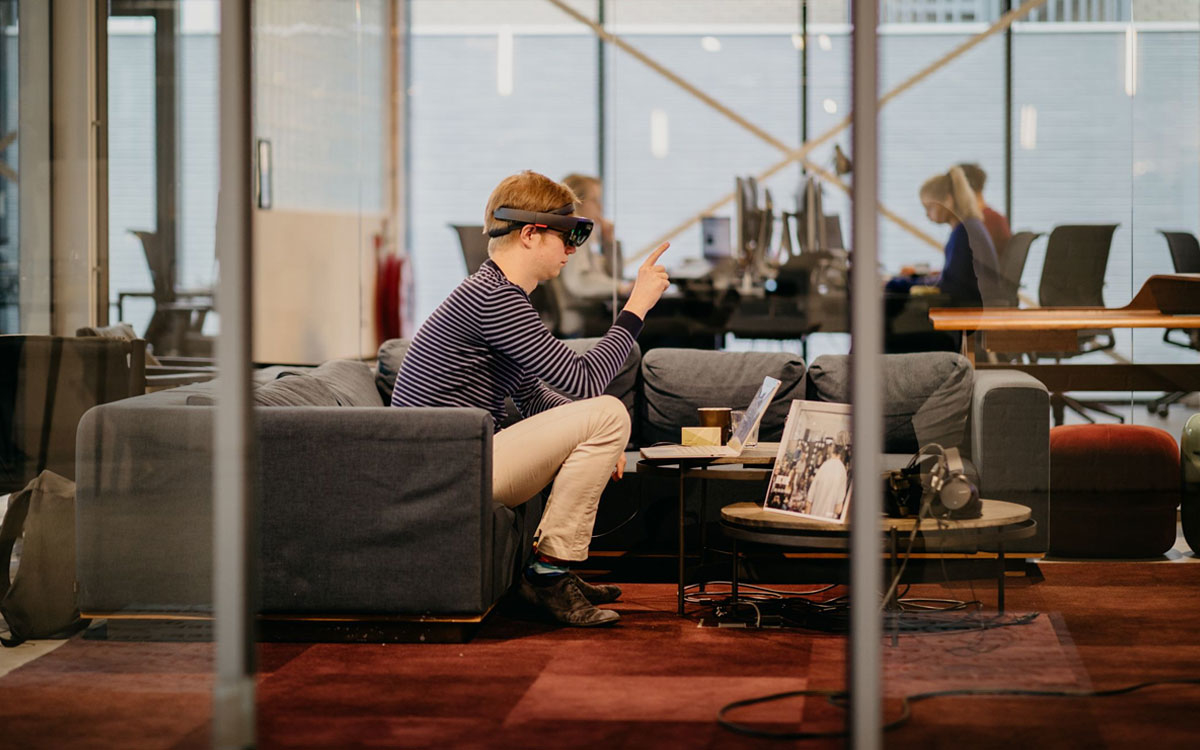Project Cambria shows Meta continues to look to the future through high-end VR headsets

When I meet with a client who wants to learn more about the metaverse it’s usually not long until they ask how long it will be until we experience the virtual world in a similar way to Wade Watts and his friends in the film Ready Player One.
Set just 23 years from now, the movie depicts a society where people prefer to spend their time in a fully open virtual world due to the state of the real one around them.
Users can do anything they like – they can touch and feel everything. The one major downside is that when you die in the environment, you lose all your virtual currency and possessions.
The people we speak to want to know when their audience will be able to strap on a headset and experience something similar (hopefully without the total loss of digital assets – something unlucky crypto wallet users have experienced via hacks and scams, but I digress).
We are still a long way away from having the software, computing power, network capability, connectivity, world creation and hardware to achieve all of this, but the tech industry continues to move in this direction.
Awaiting a headset that will change how we build and consume metaverse experiences
Meta (née Facebook) is seen by many as leading this charge (even if by self-appointment). They have dominated the Web 2.0 landscape and hired aggressively to bring in best-in-class experts to help them build their metaverse vision.
Part of this strategy will see the creation of new VR headsets, an area where they’ve already had success. Last year, their Oculus range reportedly outsold Xboxes, and the Oculus VR companion app was downloaded around 2m times from Dec 25, 2001, to Jan 5, 2022.
And Meta has just opened their first physical store for virtual reality products in Burlingame, California, near its Reality Labs HQ.
Customers will be able to try on, experience, and learn more about the company’s VR headsets and offering. Judging by the promotional imagery, I’m imagining something akin to an Apple Store only with a focus on VR products.
It may seem slightly anachronistic to be selling VR in the real world, and I doubt this is a long-term play for Meta, but they need to raise awareness of their headsets and what they can do.
Martin Gilliard, Head of Meta Store, said: “The Meta Store is going to help people make that connection to how our products can be the gateway to the metaverse in the future.
“Having the store here in Burlingame gives us more opportunity to experiment and keep the customer experience core to our development. What we learn here will help define our future retail strategy.”

Will Project Cambria be a game changer?
In terms of Meta’s actual hardware plans, CEO Mark Zuckerberg announced last week that the company’s Project Cambria headset will be released later this year and “focused on work use cases and eventually replacing your laptop or work set-up” rather than gaming and socializing.
The company is also working on eye and face tracking to replicate facial reactions in the real world.
The headset is reportedly part of Meta’s bigger push to conquer both the social and enterprise hardware markets. The Information reported this week that the company plans to launch four new headsets by 2024, including AR glasses and the intriguingly named “Cardiff” headset.
At the moment, access to Meta’s Horizon Worlds is limited to those in North America who have a compatible headset. The platform hit 300,000 users in February and the company is also working on a web-based version for those who don’t have headsets.
Those outside North America are limited to being able to access Horizon Workrooms for virtual meetings and presentations. Visitors can also join via a computer rather than a headset and while the experience can be fun, it’s also limited. We shall see if Project Cambria and the opening up of the Horizons platform across the globe change this, but we await firm timelines.
As for brands in Horizon Worlds, they have been slow to move into the space because of their limited reach and users. However, there are some brands that are taking early moves such as the fast-food chain Wendy’s, who announced it was doing so in March, with gamified experiences which allow you to win real-life food”
Opening up the platform will no doubt drive more activations but the challenge to make more people use VR headsets on a regular basis remains, no matter how good the experience may be.
Apple’s much-vaunted headset could be the one that drives adoption as – much like the iPod – it will likely have a sleek design, be easy to use and accompanied by a simple yet effective eco-system of apps and experiences. But it’s unlikely to be compatible with Meta’s products and services. Goals of a decentralised virtual world still seem a long way off as these tech giants jockey for position.
How can tech companies get more headsets onto more people
As someone who’s worked in the VR and AR space for seven years, I’ve seen first-hand how difficult it is to get a headset onto someone. It’s such a change in how we consume content.
When we went from the written word in a newspaper to a computer screen to a mobile screen, this process made sense to the user, if not totally linear. The same goes for when video went from the TV screen to the computer screen to the mobile screen.
Some cite the advent of VR as when the Lumière brothers first showed a film of a moving train and people ran out of the cinema as they thought it would come smashing through the screen.
But I think headset adoption will be even harder – we need to provide several things to drive it – the hardware, the connectivity, the experiences people can truly get nowhere else and want to come back to – be they for work or play. Then there’s the charging, the cleaning, the updates. It’s a challenge to get another device into the hands of people on a regular basis when the mobile phone works so well.
And with Meta’s new headset priced at “significantly more than $800”, the price point currently remains an issue.
The bottom line is that we still need to give people a reason to 1. Buy headsets; 2. Keep coming back and using them. This may change over time but the opening of a physical VR store in California is unlikely to move the needle much in terms of headset adoption. We need a wider variety of experiences for the wide variety of users to keep coming back daily.




